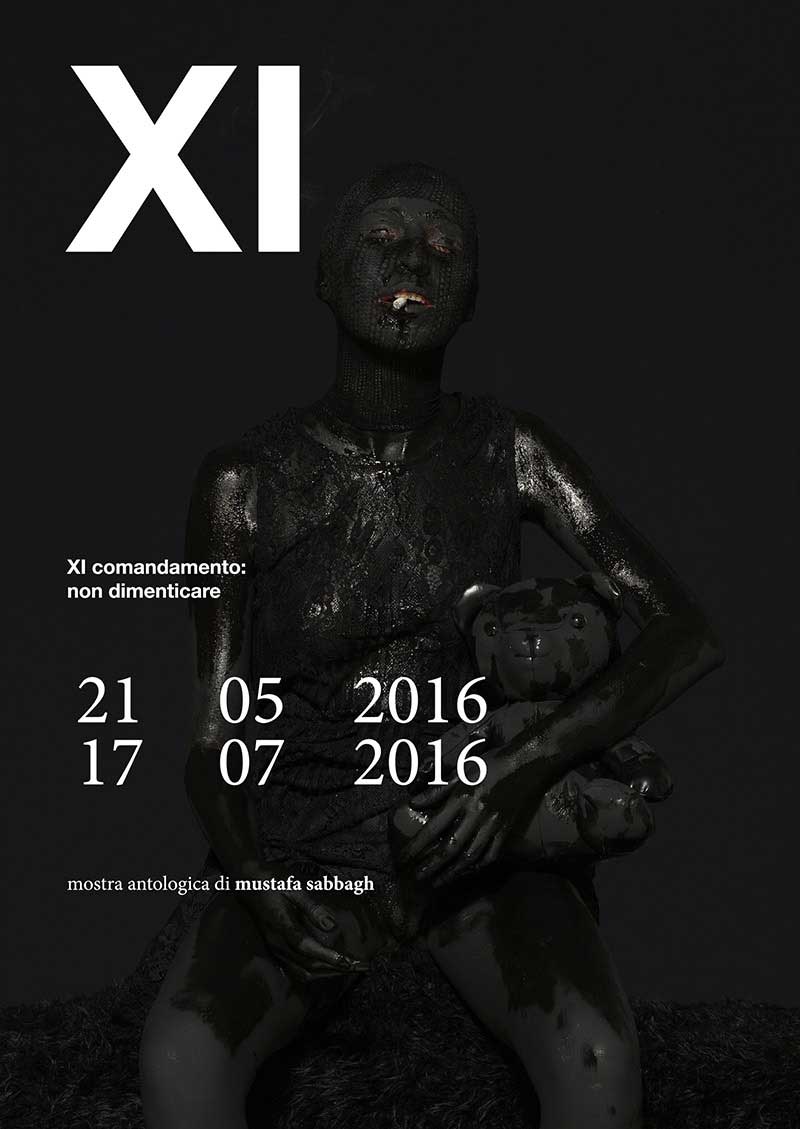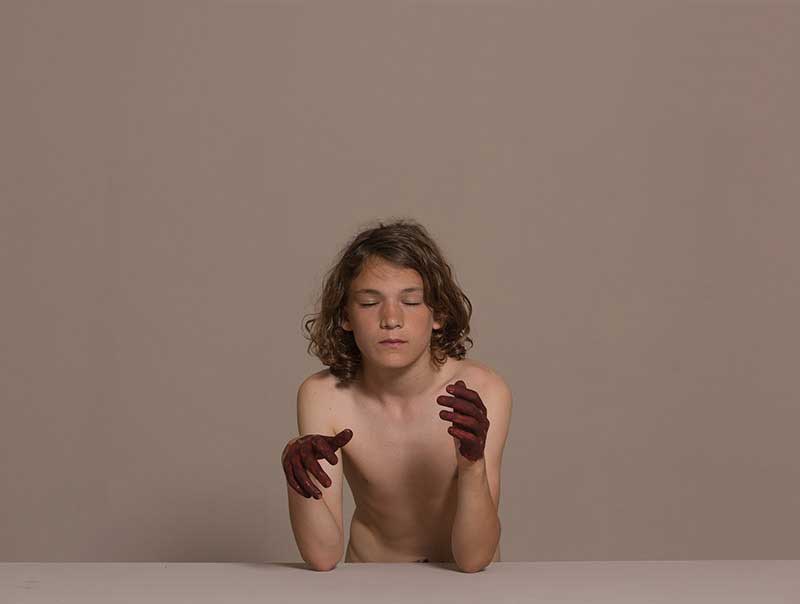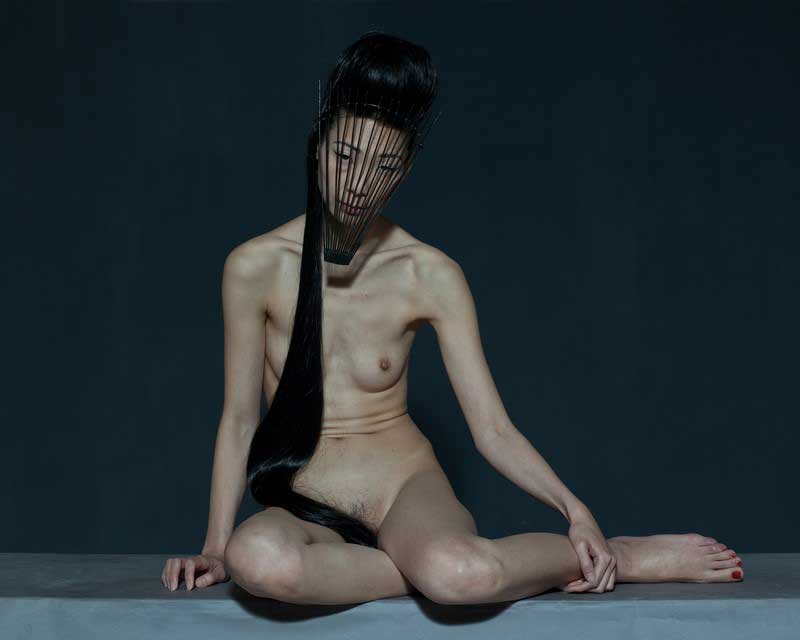It will be the huge ZAC ai Cantieri Culturali alla Zisa industrial archaeology area – located in Palermo, Sicily – to host the first retrospective exhibition of Mustafa Sabbagh, whose inauguration is scheduled for Saturday, May 21, 2016.
The exhibition, promoted by the Department of Culture of the City of Palermo, carries on the brand new programming season, launched last year, which soon brought to national and international attention the ZAC area as «a place of reference for contemporary art in the south of Europe and in the heart of the Mediterranean», in the words of the City Councillor for Culture Andrea Cusumano, «an exhibition centre that increasingly is strengthening its powerful character thanks to the action generated by great masters of contemporary art».
A season of exhibitions inaugurated by the solo show of Mauro D’Agati curated by Gerhard Steidl, followed by the evocative anthological exhibition dedicated to Regina José Galindo, to continue with the great retrospectives of Hermann Nitsch and Letizia Battaglia. Programming period that will be enriched with several other important contemporary art projects during the current year, prior to the main event which will bring Palermo to the fore as one of the contemporary art capitals in 2018, thanks to the famous international art biennial Manifesta 12.
The invitation addressed to Mustafa Sabbagh confirms, on the part of the Administration, the strong and coherent commitment to build a cultural programming mindful of human rights such as of great challenges of the current millennium’s beginning, bringing back in the frontline imperishable questions concerning the entire mankind, doing so through great names of international contemporary art.
«The city of Palermo welcomes Mustafa Sabbagh at ZAC, in him recognizing a common genetic code: » says the Mayor Leoluca Orlando, «the one of a tightrope walker which wants to learn to fly not forgetting the risk of the fall, through the language most suitable to himself: the artistic one. Today more than ever we need to reconnect our roots to our wings. We need to hold the awareness of our history, of our traditions and of our culture, while nurturing the ambition to fly through the acceptance and the courage to choose our own identity – supreme act of freedom».
2000 square meters for a former industrial hangar dating back to the early twentieth century, in which there will be exposed more than 75 photographic artworks among Sabbagh’s most famous ones, 10 video artworks and three new site-specific video-installations, as well as the photographic installation which has been acquired by the roman MAXXI Museum of XXI Century Arts’ permanent contemporary art collection, here presented in preview – the same as several unedited artworks that the artist has chosen to baptize in Palermo.
In the idea of the artist, which stands out as the exhibition’s curator too, ZAC will be designed as a contemporary schizophrenia’s container, a large closet living on its disorder and its owner’s psychosis; metaphor for a disoriented humanity, schizophrenic in concealing his own fears, each one here catalogued by Sabbagh. A humankind which is forgetting its own humanity, its individual or social urgency of integration, asking for a social duty as a secular commandment starting from Palermo: You shall not forget.
You shall not forget in Onore al Nero, photographic series that made Sabbagh worldwide renowned, personal reflection and social challenge moving from each one’s individual dark side, subverting conventions through #000’s multidimensionality, and recalling history of art by means of its own reinterpretation.
You shall not forget in Candido, unedited project, secular absolution granted by those who know how to share the blame through pristine eyes – and bloody hands – of a child, as in Das Unheimliche, in Freudian memory, in which blood stains the adult expectation regarding the different.
You shall not forget in Chat Room, love letter/symphony of pain from a poor fellow-Christ to a poor devil-Judas, and in Dark Room, rediscovery of innocence through a voyeuristic act.
You shall not forget in anthro_pop_gonia, video-installation also unedited in Italy, Ariadne’s thread from the history of Greek mythology to the history of contemporary vices.
You shall not forget in Made in Italy © – Handle with care, cynical slap in the face of questions whispered, not shouted – as all the revolution’s harbingers ones should be. What’s the true meaning of foreign body within an infected by obtuseness society? Useless attempting to forget it, in front of the seriality of a crime perpetrated by man to man, drowned in the black of the installation 09.2015: 3944 – specially conceived for Palermo.
As for Palermo, to highlight its soul deeply steeped in art and contamination, the artist has set up a collaboration with the prestigious Sicilian galleries FPAC Francesco Pantaleone Arte Contemporanea and Rizzuto Gallery, internationally appreciated realities thanks to their recognizable research – different in their artistic semantics, common in their high aim-related quality, where he decided to exhibit two unedited artworks, as if they were two connective synapses to discover into the reticulated nervous system of the city; works of art thought in relation to the peculiarities of the two spaces in which they are welcomed. A triangulation not to forget that ‘diversity’ is another way of defining ‘richness’.
«A schizophrenic does not forget; a schizophrenic accumulates», writes the artist, «as in a multiple personality disorder, as in a zapping out of control». In the concept of this new exhibition design, works of art by Mustafa Sabbagh rebel against the predictability of a philological order, to break into inescapable contradictions.
About Mustafa Sabbagh
Mustafa Sabbagh was born in Amman (Jordan). Italo-palestinian, raised between Europe and Middle East, his imprinting is cosmopolitan, while his attitude is nomadic.
Former assistant of Richard Avedon, and teacher at Central Saint Martins College of Art and Design in London, after a successful career as a fashion photographer recognized by the most prestigious magazines of the world, Sabbagh focuses his research towards contemporary art through the mediums of photography and video-art by a kind of aesthetic counter-canon in which punctum is the skin – diary of individual’s uniqueness. Harmony of imperfection, psychological investigation and anthropological enquiry through image construction are the stylistic features moved by Sabbagh from slicks, to the white cubes of the most important galleries and museums of the world – such as the Musée de l’Elysée, in Lausanne, internationally considered as a temple of photography.
Often protagonist of interviews and documentaries inquiring into his visions, in 2013 Sky Arte HD, through the series Photographers, elected him as one of the 8 most significant artists of the contemporary Italian scene. To date, Mustafa Sabbagh has even been recognized, by an art and photography historian the likes of Peter Weiermair, as one of the 100 most influential photographers in the world, and one of the 40 most important nude portraitists – the only one from Italy, on an international basis.
His artworks are included in numerous internationally accredited publications (including Faces – the 70 most beautiful photography portraits of all time, curated by Peter Weiermair), in many sold-out monographs (such as About Skin, edited by Damiani and acquired by the permanent book collection of Tate Gallery, in London) and in several permanent private and public collections, both in Italy and abroad – including the historical Farnesina Art Collection, the ArteFiera permanent collection (Bologna), the acquisition of a whole new project by the permanent contemporary art collection of MAXXI – National Museum of XXI Century Arts (Rome), and the acquisition of an artwork commissioned by Boschi – Di Stefano House-Museum (Milan) in partnership with the Foundation Ferrara Arte.
























